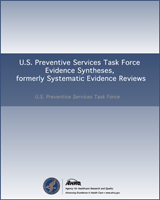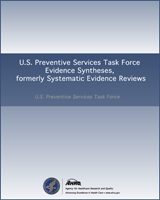NCBI Bookshelf. A service of the National Library of Medicine, National Institutes of Health.
Humphrey L, Chan BKS, Detlefsen S, et al. Screening for Breast Cancer [Internet]. Rockville (MD): Agency for Healthcare Research and Quality (US); 2002 Aug. (Systematic Evidence Reviews, No. 15.)
This publication is provided for historical reference only and the information may be out of date.
Fair-quality, relatively consistent evidence suggests that mammography screening reduces breast cancer mortality among women aged 40 to 74. We found no evidence that including clinical breast examination conferred greater benefit than mammography alone. We also found no evidence supporting the role of breast self-examination in reducing breast cancer mortality.
Over the 3 decades in which the mammography trial data have been available, critical reviewers and the investigators themselves have discussed limitations and irregularities in reporting of data. One highly publicized review by the Cochrane Collaboration criticized the trials in regard to randomization, post-randomization exclusions, and determination of the breast cancer deaths.24 It found all but two of the trials, Malmo and Canada, severely flawed or of poor quality, and prompted some official bodies to question their support for screening mammography.
We identified many of the same design problems highlighted in the Cochrane review, but reached different conclusions about their bearing on the validity of the findings. With the exception of the Edinburgh trial, we found inadequate evidence to conclude that the specific flaws identified introduced biases of sufficient magnitude or direction to invalidate the findings or to reject the inference that screening mammography reduces breast cancer mortality.
The effectiveness of screening women aged 40 to 49 is a longstanding controversy. In early years it centered on the lack of evidence that observed risk reductions were statistically significant.9, 32, 177 Over time that argument has dissipated as more evidence has emerged of a significant separation in survival curves with longer follow-up. The delay in the separation of those curves, however, has prompted some to question whether the observed benefits are due to the detection of cancers after age 50, suggesting little incremental benefit from initiating screening at age 40 and exposing women to the harms of screening for an extra decade.141, 178 We found little evidence to convincingly address this concern and some evidence that some benefit from screening women aged 40 to 49 would be sacrificed if screening began at age 50.113, 179
The use of age 50 as a threshold is somewhat arbitrary (except that it approximates the age of menopause). The risks of developing and dying from breast cancer are continuous variables that increase with age, with the greatest increase in incidence actually occurring prior to menopause.180, 181 We found that the relative risk reduction achieved with mammography screening does not differ substantially by age, though the time required to obtain the benefit is longer for younger women. On the other hand, the potential years of life gained are greater among younger women. Thus, the variable most affected by age is absolute risk reduction, which increases as a continuum over time, while the number needed to screen decreases. The age of 50 has no special bearing on this pattern, and some question the scientific rationale for treating the 40- to 49-year-old age group as a special entity.132
What emerges as a more important concern, across all age groups, is whether the magnitude of benefit is sufficient to outweigh the harms. The risk for false-positive results (and their downstream consequences) decreases with age. Thus, although at any age mammography poses a tradeoff of benefits and harms, the balance between increasing absolute risk reduction and decreasing harms grows more favorable over time. The age at which this tradeoff becomes acceptable is a subjective judgment—early evidence suggests that women will tolerate a high risk for false-positive results—that cannot be answered on scientific grounds. As noted above, 63% state they would accept 500 false positive exams to save one life.163 Based on the results of our meta-analysis, we calculated that over 10 years of biennial screening, for 10,000 40-year-old women invited to be screened, about 400 women would have a false positive mammogram and 100 women would undergo fine needle aspiration or biopsy to prevent one death from breast cancer.
Women older than age 70 have the highest incidence of breast cancer, and test performance is likely to be comparable to that of women aged 50 to 70. Therefore, theoretically, mammography should be at least as effective for women older than age 65 as it is for younger women. Offsetting this potential benefit, however, is the greater comorbidity observed in the elderly. The potential benefit of early detection is unlikely to be realized among women suffering from other diseases that diminish life expectancy, in those who would not tolerate evaluation or treatment, and in those with impaired quality of life (eg, dementia).148 In addition, no data from RCTs provides information about the morbidity associated with screening, follow-up, and treatment among women older than age 74. Finally, a major concern in elderly women is the diagnosis and treatment of DCIS, since mortality from DCIS is low (1%-2% at 10 years) and 99% of DCIS is treated surgically, and surgical results may differ among older women.150
The interval with which mammography was performed in the screening trials varied between 12 and 33 months, but annual mammograms were no more effective than a biennial interval. Data from the Swedish Two-County Trial indicate that the period of time in which breast cancer can be detected before it presents clinically is shorter for women aged 40 to 49.1 27, 131, 182 Thus, annual screening may be more important in this age group than in older women, but we found no direct proof for this hypothesis from the controlled trials that have been completed so far.
We found no evidence from the trials that CBE or BSE reduce breast cancer mortality. Whether the BSE trials are generalizable to the United States, where the use of CBE and mammography and the incidence of breast cancer are higher, is uncertain. What is also uncertain is whether BSE might be beneficial to women who are not in the ages where mammography is recommended or do not avail themselves of mammography. In the setting of CBE and mammography, the probability of finding a significant decrease in mortality is likely to be small.
In summary, when judged as population-based trials of cancer screening, most of the mammography trials are of fair quality. Their flaws reflect tradeoffs made in the planning of the trial that make the trials widely generalizable with potentially some cost in internal validity. In absolute terms, the mortality benefit shown with mammography screening is small enough that biases in the trials could erase or create the observed mortality reduction. However, in our review, while there are flaws in the design or execution of the trials, there is insufficient evidence to conclude that the majority were seriously biased and consequently invalid.
- Discussion - Screening for Breast CancerDiscussion - Screening for Breast Cancer
Your browsing activity is empty.
Activity recording is turned off.
See more...

